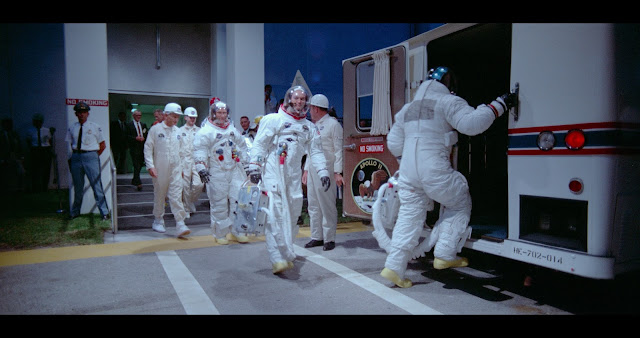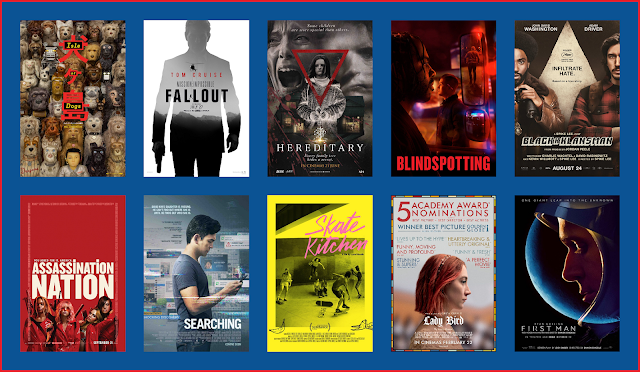Apollo 11 Review
(A version of this article originally appeared on kernelnow.com / mynewslike.com)
On July 20th 1969, astronauts Neil Armstrong and Edwin “Buzz” Aldrin became the first humans to land on another celestial body – The Moon. Watched over by their orbiting pilot Michael Collins, they made both human and televisual history as they exited ‘The Eagle’ out onto the surface, but what often gets lost in the majesty of the “one small step” that was first taken by Armstrong is the entirety of the eight-day mission that was Apollo 11.
In the past few years, there have been more conceited efforts to highlight the effort required to reach our nearest neighbor. Documentaries such as Mission Control: The Unsung Heroes of Apollo and feature films like Hidden Figures have done well to offer a glimpse behind that particular curtain; however, as it pertains to the mission itself, there has never been a more ambitious retelling of that famous summer week as Apollo 11.
 |
| Armstrong, Aldrin and Collins – never to be the same again (source: Universal Pictures) |
Comprised of unreleased footage of the mission from a variety of primary sources, it would be easy to get caught up in the fascinating story of how these visuals came together. As a modern-day audience, it is to our incredible luck that such a comprehensive archive existed; perhaps most fortunate is that many film-makers of the time turned to a larger film format to assert their medium’s dominance over the new television. This has resulted in much of the footage here being captured on 65mm film stock, almost identical to the modern IMAX standard of 70mm. There are of course large parts which have instead been upscaled to take advantage of the bigger screen, but for those naturally filmed in this scope it does feel like THE definitive presentation of the mission – in particular, the colossal launch of the Saturn V rocket. This size of image also frequently feels like a metaphor for the literal and figurative enormity of the mission, from start (the iconic John F. Kennedy speech) to climax (the seemingly-endless international astronaut victory tour).
There is a time-capsule feel to Apollo 11: a major factor to the mission was not just the human effort involved but the human interest. There are countless and wonderful shots of civilians looking up and across at the ship at launch, and viewing live in huge numbers the descent onto the lunar surface.
Thanks to both the exhaustive, high-quality nature of the pre-existing footage and the incredible restoration job that the production team have undergone, all of these scenes seem uniquely modern, unburdened by the technological limitations of a half-century ago. It provides more than a mere snapshot of summer-lovin’ 60s America – it’s the closest alternative to boarding a time machine and actually walking amongst these people.
 |
| Awe-pollo 11 (source: Universal Pictures) |
 |
| A mere glimpse at the unknown heroes of the Apollo program (source: Universal Pictures) |
If there is one area in which Apollo 11 may be lacking, it’s
in the audio treatment. Many “in-world” sounds have been re-mastered,
perhaps even re-recorded to accurately portray the sheer volume of a
rocket launch whilst Matt Morton provides an eerie soundtrack that would
probably fit right in a 1960s sci-fi flick. But this
attention-to-accuracy proves a stumbling point in much of the primary
audio sources, as many of the communications between mission control and
the Apollo men are too quiet, distorted and aged for a cinema screen.
The credits inform us that all of the audio was recorded using
technology available at the time of launch; this may be the one area
where a 21st century touch was required. The narrative approach of the
documentary may also prove off-putting to a more casual viewer, as it
takes an observational method free of narration. To children especially,
the lack of a steady hand explaining the timescale and events may be
too poetic to absorb.
 |
| That rarest of things: an instantly-iconic image (source: Universal Pictures) |



Comments
Post a Comment